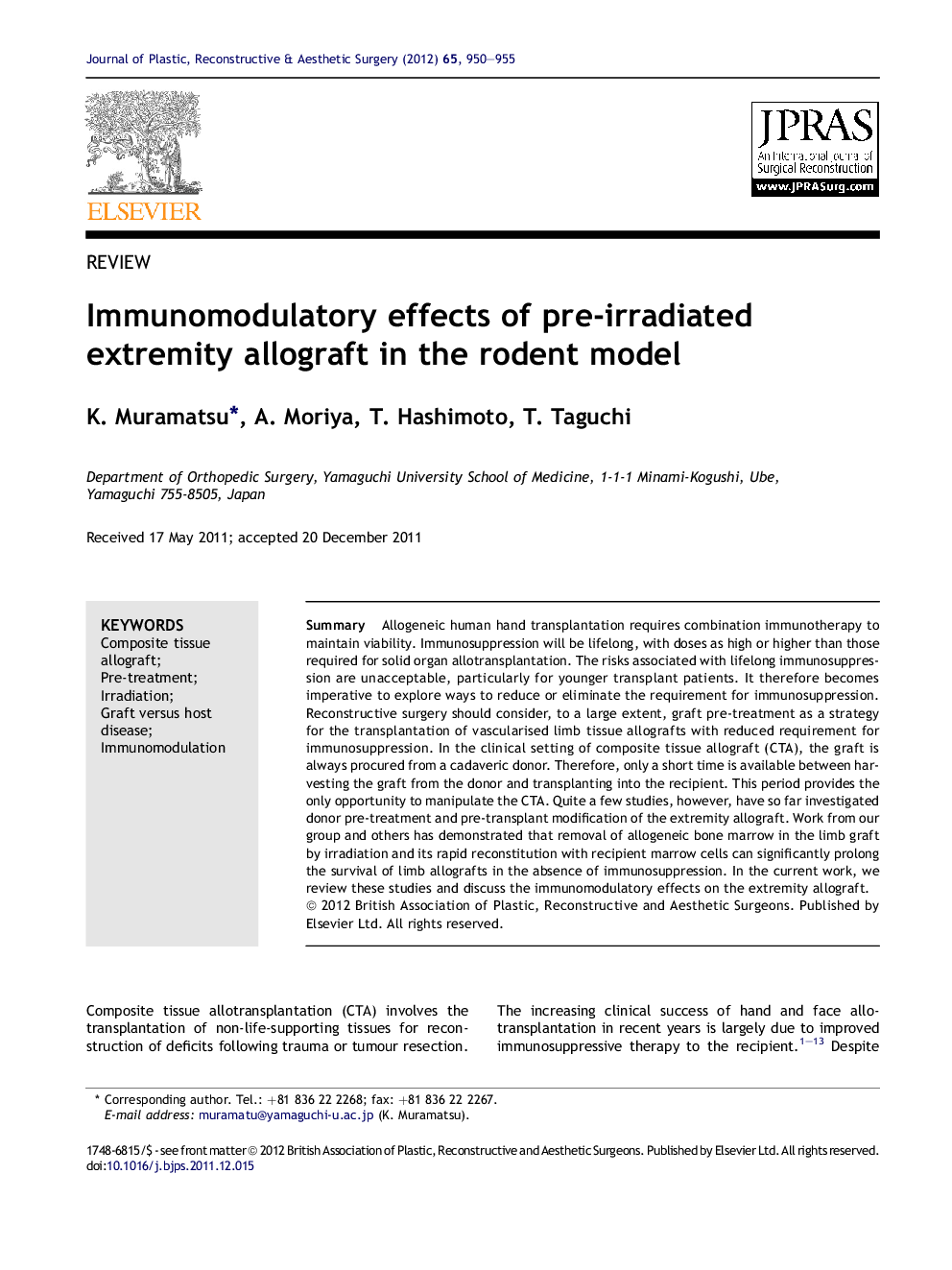| Article ID | Journal | Published Year | Pages | File Type |
|---|---|---|---|---|
| 4118255 | Journal of Plastic, Reconstructive & Aesthetic Surgery | 2012 | 6 Pages |
SummaryAllogeneic human hand transplantation requires combination immunotherapy to maintain viability. Immunosuppression will be lifelong, with doses as high or higher than those required for solid organ allotransplantation. The risks associated with lifelong immunosuppression are unacceptable, particularly for younger transplant patients. It therefore becomes imperative to explore ways to reduce or eliminate the requirement for immunosuppression. Reconstructive surgery should consider, to a large extent, graft pre-treatment as a strategy for the transplantation of vascularised limb tissue allografts with reduced requirement for immunosuppression. In the clinical setting of composite tissue allograft (CTA), the graft is always procured from a cadaveric donor. Therefore, only a short time is available between harvesting the graft from the donor and transplanting into the recipient. This period provides the only opportunity to manipulate the CTA. Quite a few studies, however, have so far investigated donor pre-treatment and pre-transplant modification of the extremity allograft. Work from our group and others has demonstrated that removal of allogeneic bone marrow in the limb graft by irradiation and its rapid reconstitution with recipient marrow cells can significantly prolong the survival of limb allografts in the absence of immunosuppression. In the current work, we review these studies and discuss the immunomodulatory effects on the extremity allograft.
